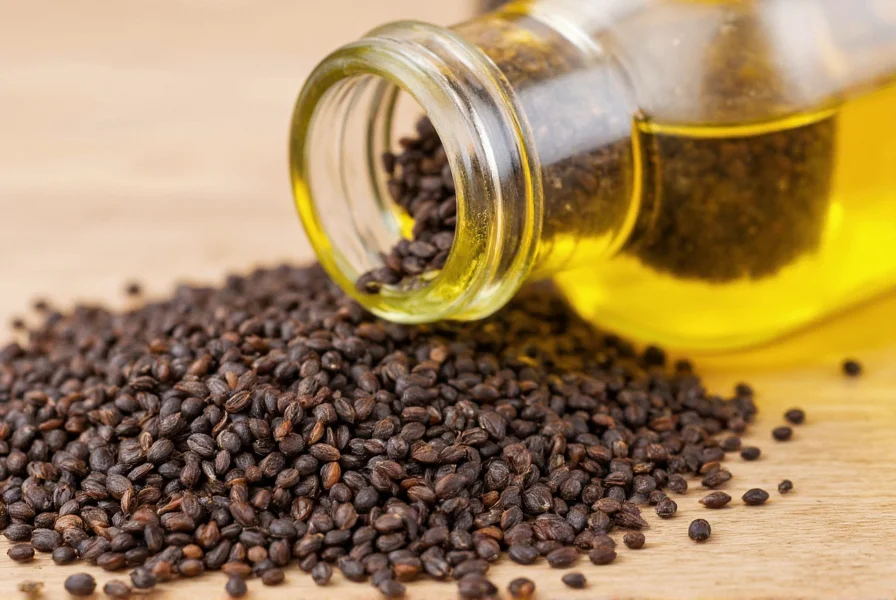
Understanding Black Cumin Seed Oil: Origins and Composition
Black cumin seed oil comes from the Nigella sativa plant, a member of the Ranunculaceae family. Despite its name, this plant is not related to common cumin (Cuminum cyminum). The seeds, often called black seeds or kalonji, have been used medicinally since ancient times, with evidence of their use found in Egyptian pharaoh tombs.
The oil extraction process typically involves cold-pressing the small, black seeds to preserve their bioactive compounds. The most significant active component is thymoquinone (TQ), which constitutes approximately 30-48% of the essential oil fraction. Other important compounds include:
| Compound | Percentage in Oil | Known Properties |
|---|---|---|
| Thymoquinone | 30-48% | Antioxidant, anti-inflammatory |
| p-Cymene | 10-20% | Antimicrobial |
| Thymol | 5-15% | Antifungal, antiseptic |
| Alpha-pinene | 5-10% | Anti-inflammatory |
Historical and Traditional Uses
Historical records show black cumin seed oil has been used across multiple traditional medicine systems. In ancient Egyptian medicine, it was referenced in the Ebers Papyrus (1550 BCE). Traditional Islamic medicine mentions it as "the remedy for all diseases except death." Ayurvedic practitioners in India have used it for respiratory conditions, while Unani medicine employed it for digestive issues.
Traditional applications include:
- Topical treatment for skin conditions like eczema and psoriasis
- Respiratory support for asthma and bronchitis
- Digestive aid for bloating and stomach discomfort
- Immune system support during cold and flu season
- Hair and scalp treatment for dandruff and hair loss
Modern Applications and Scientific Research
Contemporary research has investigated many traditional claims about black cumin seed oil. A 2020 review published in Molecules analyzed over 500 studies on Nigella sativa, noting its potential therapeutic properties while emphasizing the need for more human clinical trials.
Current research suggests possible benefits in several areas:
Anti-inflammatory Properties
Multiple laboratory studies demonstrate that thymoquinone inhibits inflammatory pathways. A 2019 study in Immunological Investigations found black seed oil reduced inflammatory markers in patients with rheumatoid arthritis, though researchers called for larger trials.
Skin Health Applications
Research indicates potential benefits for various skin conditions. A 2017 study in Journal of Dermatological Treatment showed improvement in psoriasis symptoms when black seed oil was applied topically alongside conventional treatment.
Metabolic Health
Preliminary research suggests possible effects on blood sugar regulation. A 2018 meta-analysis in Journal of Ethnopharmacology noted modest improvements in fasting blood glucose among diabetic patients taking black seed oil supplements.
Safety Considerations and Usage Guidelines
While generally considered safe when used appropriately, black cumin seed oil requires careful consideration:
Potential Side Effects
Most people tolerate black cumin seed oil well, but some may experience:
- Mild digestive upset when taken orally
- Skin irritation when applied topically (always do a patch test)
- Allergic reactions in sensitive individuals
Important Precautions
Certain populations should exercise caution:
- Pregnant women: May stimulate uterine contractions
- Nursing mothers: Insufficient safety data
- Individuals with low blood pressure: May cause further reduction
- Those scheduled for surgery: May affect blood sugar control
- People taking immunosuppressants: May interfere with medication
Recommended Usage
For culinary use: Add 1-2 drops to foods as a flavor enhancer (strong taste) For topical application: Dilute with carrier oil (1:3 ratio) before skin application For supplementation: Typical doses range from 1-2.5 mL daily, but consult healthcare provider first
Selecting Quality Black Cumin Seed Oil
Not all black cumin seed oil products offer the same quality. When selecting a product:
- Look for cold-pressed, unrefined oil
- Check for thymoquinone content (higher quality products specify this)
- Choose dark glass bottles to protect from light degradation
- Verify third-party testing for purity and contaminants
- Check expiration date and storage recommendations
Proper storage maintains potency—keep in a cool, dark place and use within 6-12 months of opening. Refrigeration can extend shelf life but may cause cloudiness (which reverses at room temperature).
Conclusion: Separating Fact from Hype
Black cumin seed oil represents a promising natural product with historical significance and emerging scientific support. While traditional medicine systems have utilized it for centuries, modern research is beginning to validate some—but not all—of these traditional uses. Current evidence suggests potential benefits for inflammation, skin health, and metabolic markers, though more rigorous human studies are needed.
Consumers should approach black cumin seed oil as a complementary wellness option rather than a replacement for medical treatment. As with any supplement, consult with a healthcare provider before incorporating it into your routine, especially if you have underlying health conditions or take medications.











 浙公网安备
33010002000092号
浙公网安备
33010002000092号 浙B2-20120091-4
浙B2-20120091-4